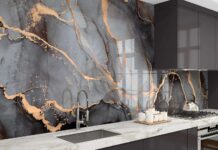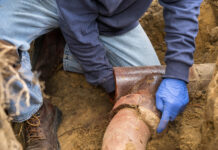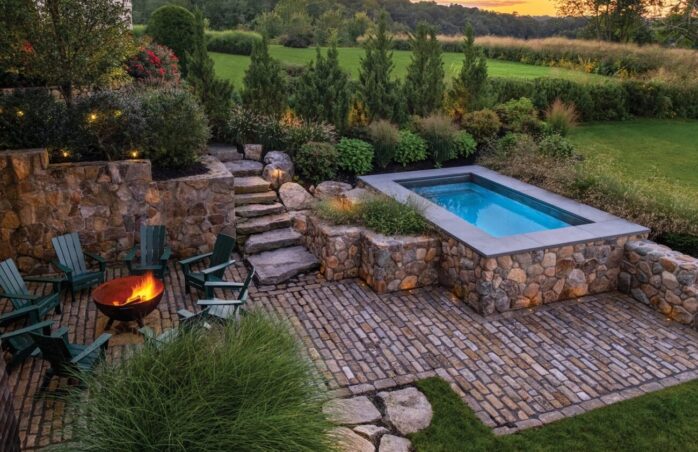
In the hustle and bustle of everyday life, creating a tranquil retreat in your home is more than a luxury, it’s a necessity. A serene outdoor space is a sanctuary, a place to unwind, relax, rejuvenate and disconnect from the outside world. It encourages mindfulness, improves mental well-being, and promotes a harmonious connection with nature.
Among the myriad of options to create a soothing outdoor retreat, plunge pools stand out for their compact size, aesthetic appeal, and therapeutic benefits. They’re smaller than regular swimming pools but large enough for relaxation, making them perfect for smaller spaces. The cool water stimulates the body’s circulation, providing a rejuvenating hydrotherapy experience right in your backyard.

Assessing Available Space and Budget
Before embarking on the plunge pool journey, it’s crucial to assess the available space. Measure the area, considering the pool’s size and necessary clearance for safe movement around it. Consider the site’s shape and accessibility, as well as natural features like trees or slopes, which might affect the installation process or enhance the pool’s aesthetic appeal.
Budgeting is a critical step. Costs vary depending on the pool’s size, materials, design features, and whether you opt for a DIY or professional installation. Other considerations include the ongoing costs of maintenance, heating, and water treatment. Researching and comparing prices can help you make an informed decision and find cost-effective solutions that suit your budget.
Choosing the Perfect Plunge Pool Design
Design choices are almost limitless for plunge pools. From classic square or rectangular shapes to organic curves or unique custom designs, you can choose a style that complements your space and personal taste. Think about the pool’s depth too—deep enough for a refreshing dip but not so deep that it’s unsafe or uneconomical to heat.
Adding features like an integrated spa, waterfall, or underwater seating can enhance the entire plunge water experience. A spa provides a therapeutic space for relaxation, a waterfall adds a visually pleasing element and soothing sound, and seating allows for lounging in the water. These features, while potentially adding to the cost, can greatly increase the pool’s usability and aesthetic appeal.
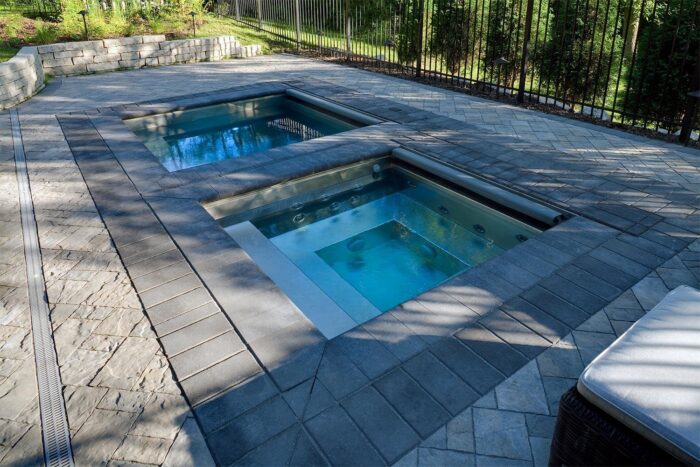
Site Preparation and Installation
Preparing the site is critical for a successful installation. This involves clearing the area of debris, ensuring the ground is stable and level, and marking out the pool’s position and size. Depending on your location, you may also need to consider factors like drainage, soil type, and potential for ground movement.
While DIY installation can be a cost-saving option for the handy homeowner, engaging professional services ensures that your project is installed correctly and safely. Professionals can handle complexities like plumbing and electrical work, and can help navigate local building codes and permits.
Should you be within the vicinity, we encourage you to reach out to esteemed pool builders Brisbane for assistance.
Selecting the Right Materials and Equipment
The choice of construction materials significantly impacts the pool’s durability, maintenance needs, and aesthetic appeal. Fiberglass is a popular choice for its smooth surface, durability, and ease of installation, while concrete allows for greater customization of size and shape but requires more maintenance.
Choosing the right equipment is vital for maintaining water quality and temperature. Energy-efficient filtration systems and pumps keep the water clean and clear, while efficient heating options like heat pumps or solar heaters ensure the water is always at a comfortable temperature.
Enhancing the Ambiance with Landscaping
Landscaping around your plunge pool can transform your outdoor space into a tranquil oasis. Plants, trees, and shrubs not only add beauty but also provide privacy and shade. Choose species that are water-friendly—ones that don’t drop leaves into the water and can tolerate a bit of splash.
Adding lighting can create a magical ambiance for evening swims, while hardscaping elements like decking, pavers, or stone surrounds can enhance the pool area’s aesthetics and functionality.
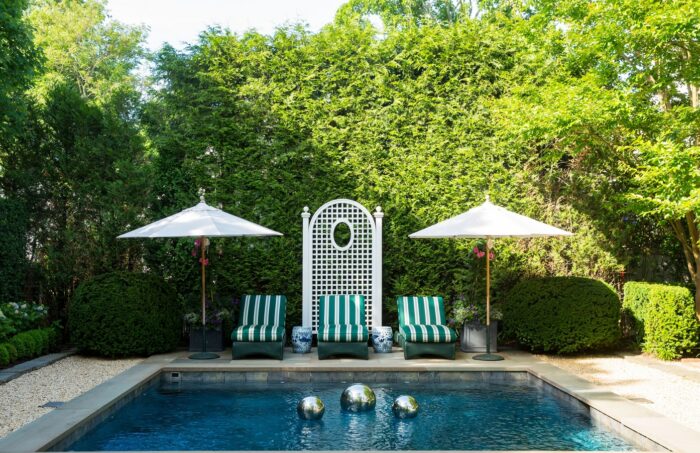
Water Treatment and Maintenance
Implementing a Regular Maintenance Routine for Water Cleanliness
Maintaining clean, clear water is crucial for a healthy and enjoyable plunge pool experience. This involves regular cleaning, filtration, and treatment to remove debris, control algae, and ensure the water is safe and inviting.
A correct pH balance in your water prevents corrosion, scaling, and skin irritation, while proper chemical usage keeps the water sanitized and algae-free. Regular testing and adjustment of your pool’s water chemistry will ensure it remains clean, clear, and safe to use.
Managing Water Temperature and Energy Efficiency
Keeping your plunge pool at a comfortable temperature doesn’t have to break the bank. Energy-efficient options like solar panels or heat pumps can heat your water effectively while keeping energy costs down.
A pool cover is an effective way to retain heat and reduce water evaporation, saving on heating and water replacement costs. It also keeps debris out of the water, reducing cleaning and maintenance needs.
Safety Measures and Regulations
Safety should be a priority in any pool installation. This includes installing a compliant fence, ensuring the entire area is well-lit, and potentially adding safety features like anti-slip surfaces, handrails, or pool alarms.
Local regulations dictate specific requirements for its installation, fencing, and maintenance. Understanding and complying with these regulations is critical to ensure the safety and legality of your pool.
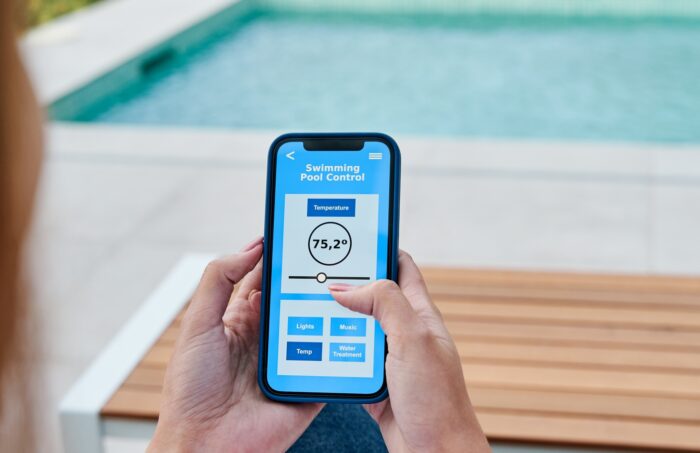
Furniture and Accessories for Relaxation
Adding comfortable furniture like loungers, daybeds, or hammocks enhances the poolside experience, offering a place to relax, read, or nap in the sun or shade.
Along with comfortable furniture, consider adding elements for sun protection like umbrellas, shade sails, or pergolas. These not only protect you from harmful UV rays but can also provide a design element that complements your overall outdoor aesthetic.
Maximizing Year-Round Use
In colder climates, consider options for water heating to maximize year-round use. This could include a high-efficiency heat pump, gas heater, or solar heating combined with a thermal pool cover to retain heat.
Adding features like a hot tub or fire pit near your pool can also extend its use into the cooler seasons. These features create a warm, inviting space for relaxation, even when it’s too chilly for a dip in the water.
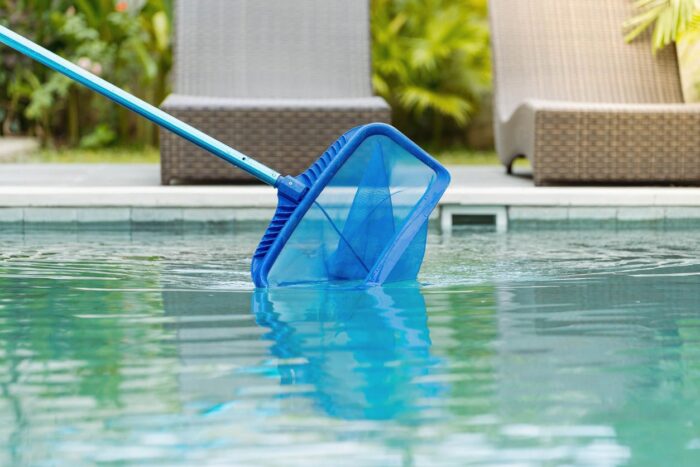
Regular Maintenance and Professional Servicing
Regular professional inspections and servicing can keep your plunge pool in top condition, ensuring its longevity and your enjoyment. Professionals can spot potential issues early and advise on necessary maintenance or repairs.
By monitoring your pool and addressing potential issues promptly, you can maintain a tranquil, inviting retreat. Regular cleaning, water testing, and equipment checks can help avoid bigger issues down the line and keep your pool experience stress-free.
A plunge pool is an investment in tranquility, health, and enjoyment. By following these tips, homeowners can navigate the process of installing and maintaining it, transforming their backyard into a serene oasis. Happy swimming!


